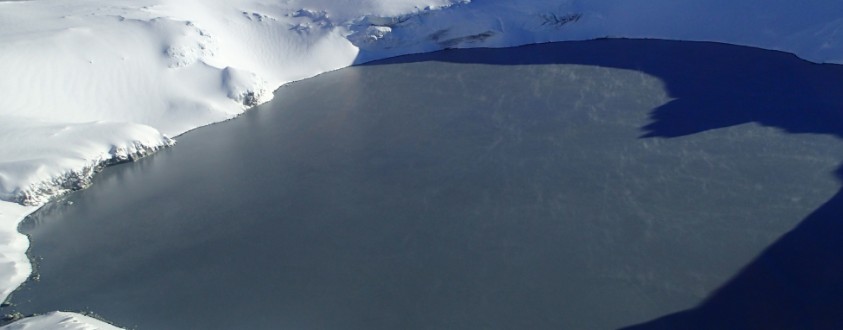Increased unrest continues at Ruapehu, Crater Lake cooling stops, New Zealand

New Zealand's Mount Ruapehu remains in a state of heightened volcanic unrest. The temperature of the summit Crater Lake has declined from 46 °C (114.8 °F), but the cooling has stopped and the temperature is rising again.
Recent visits to the volcano have confirmed the output of volcanic gas (carbon dioxide CO2, hydrogen sulphide H2S and sulphur dioxide SO2) remains elevated above background levels but is declining, GeoNet reports.
The lake temperature reached a high of 46 ºC on May 11 then the lake started to cool, declining to 30 ºC (86 °F) by June 2. Since then it has risen to the current temperature of 32 ºC. Water samples have been collected from the Crater Lake for chemical analysis. Moderate to low levels of volcanic tremor continue.
The Volcanic Alert Level remains at Level 2 (moderate to heightened unrest). The Aviation Colour Code is also unchanged, at Yellow.
Geological summary
Ruapehu, one of New Zealand's most active volcanoes, is a complex stratovolcano constructed during at least four cone-building episodes dating back to about 200,000 years ago. The 110 cu km dominantly andesitic volcanic massif is elongated in a NNE-SSW direction and surrounded by another 100 cu km ring plain of volcaniclastic debris, including the Murimoto debris-avalanche deposit on the NW flank. A series of subplinian eruptions took place between about 22,600 and 10,000 years ago, but pyroclastic flows have been infrequent.
A single historically active vent, Crater Lake, is located in the broad summit region, but at least five other vents on the summit and flank have been active during the Holocene. Frequent mild-to-moderate explosive eruptions have occurred in historical time from the Crater Lake vent, and tephra characteristics suggest that the crater lake may have formed as early as 3000 years ago. Lahars produced by phreatic eruptions from the summit crater lake are a hazard to a ski area on the upper flanks and to lower river valleys.
Featured image: Mount Ruapehu Crater Lake. Credit: GeoNet

Commenting rules and guidelines
We value the thoughts and opinions of our readers and welcome healthy discussions on our website. In order to maintain a respectful and positive community, we ask that all commenters follow these rules:
We reserve the right to remove any comments that violate these rules. By commenting on our website, you agree to abide by these guidelines. Thank you for helping to create a positive and welcoming environment for all.